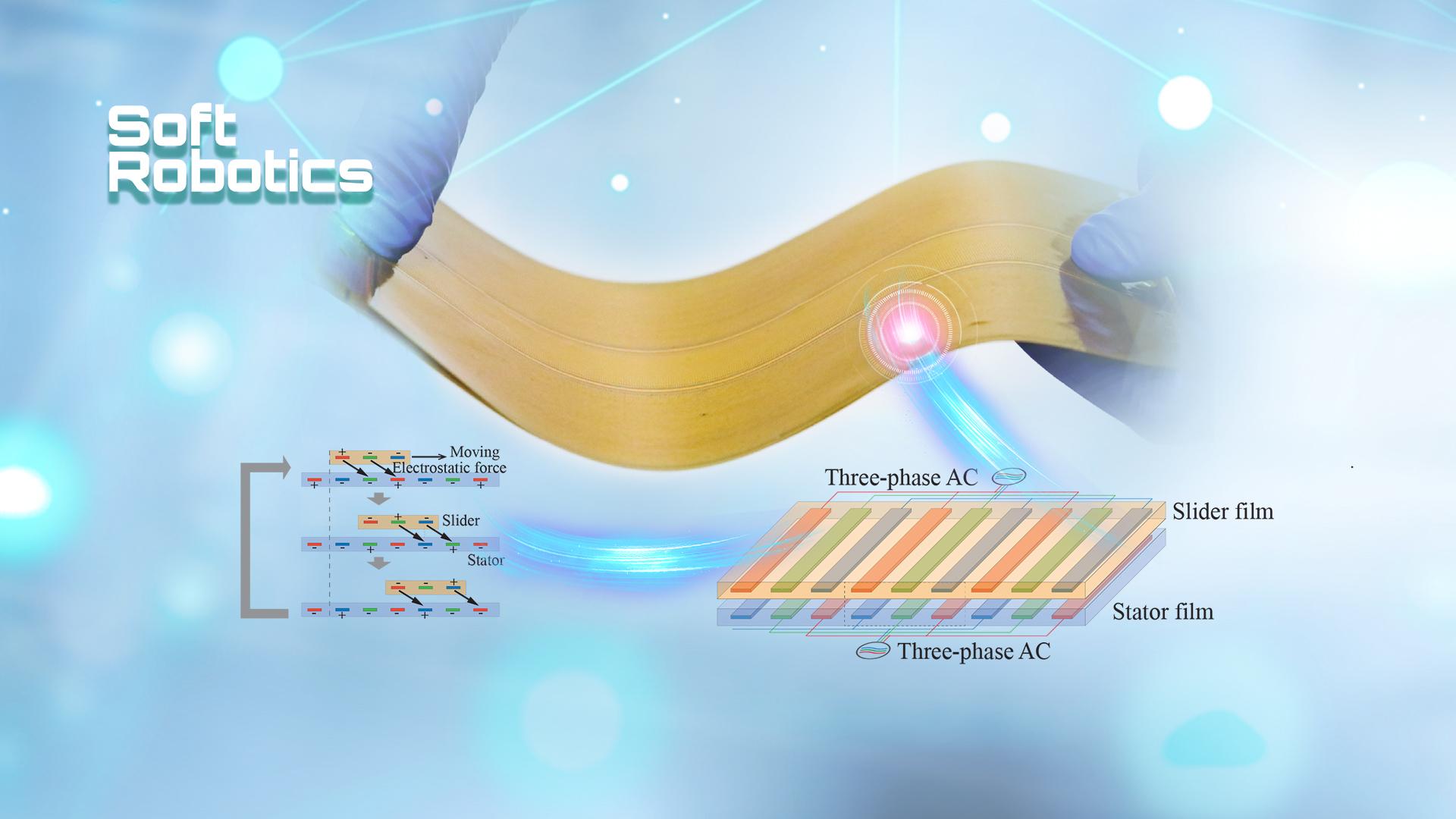SUSTech researchers made new progress in electrostatic film actuator modeling
Nov 04, 2020
Recently, a research team led by Assistant Professor Hongqiang Wang (Mechanical and Energy Engineering, SUSTech) proposed a new modeling method to achieve high-density data obtainment with multiple parameters and parameter optimization for electrostatic film actuators. Their work was published in a leading robotics journal, Soft Robotics (SoRo), entitled “Modeling and Optimization of Electrostatic Film Actuators Based on the Method of Moments.”

In the last decades, electrostatic film actuators as a new emerging soft actuation technology are attracting increasing interest from researchers due to their outstanding metrics of being compliant, lightweight, and low cost. This new technology shows the potential applications in wearable devices, surgery operation, and robotics.
As shown in Figure 1, supplied with high voltage, unlike charges are induced in the electrodes of the films, which generate an attractive force. When a shift is applied to the electrodes’ electrical polarity in a specific order, the slider moves, by steps, laterally concerning the stator. By repeating this switch order, the slider film slips continuously. Compared with most soft actuators such as pneumatic actuation and electroactive polymers, two key features are shown: high linear movement accuracy and large elongation.

Figure 1. The working principle of the electrostatic film actuator.
There are still plenty of challenges in the electrostatic film actuator, unlike traditional actuators, which could be designed based on data-driven parameter optimization. One of the key issues is that the design of the electrostatic actuator is mainly based on experience. This problem stems from insufficient basic research on mathematical models. The model involves the coupling of circuits, electrostatic fields, motion, and force. There are many parameters of the electrostatic field, and the electric field distribution is complex and difficult to calculate. At present, the research on the electrostatic field in the working moment is mainly based on finite element analysis . However, it is unable to reach the position in one step, stepwise approximation, long calculation time, and low accuracy. As a result, the calculation in previous literature can only approximate a small amount of data for use, severely limiting the actuator’s design and optimization.

Figure 2. Influence of width, space, and pitch for the electrostatic actuators.
In this article, Researchers build a comprehensive model of EFAs (electrostatic film actuator) using MoM (method of moments) based on line charges and mathematically obtain the direct relationship between the initial parameters and actuator performance. Using this model, researchers analyze multiple initial parameters, including width a, space s, pitch p, and vertical gap d, for design optimization. The MoM-Line model for EFAs is validated by data from previous studies and our on-site experiments. Through analyzing the relationship between thrust force and different electrode parameters, a more reasonable design scheme is acquired and optimization direction of the EFA for different application conditions and write an open-sourced program for the general use of parameter selection.
The electrostatic film actuators have vast applications, particularly when large stroke and high position accuracy are necessary, such as surgery robots, wearable robots, and navigation robots. Based on the model, it is helpful for researchers to design and manufacture electrostatic film actuators on-demand for different application scenarios.
Wenguang Wang from Hongqiang’s laboratory is the first author. Dr. Hongqiang Wang (Mechanical and energy engineering, SUSTech) is the corresponding author. This work is supported by the National Natural Science Foundation for Young Scientists of China, the Natural Science Foundation of Guangdong Province of China, and the Key Technology Innovation Special Funds for Key Industries of the Chongqing Science and Technology Bureau.
Paper link: https://www.liebertpub.com/doi/full/10.1089/soro.2020.0099
Latest News
Related News












